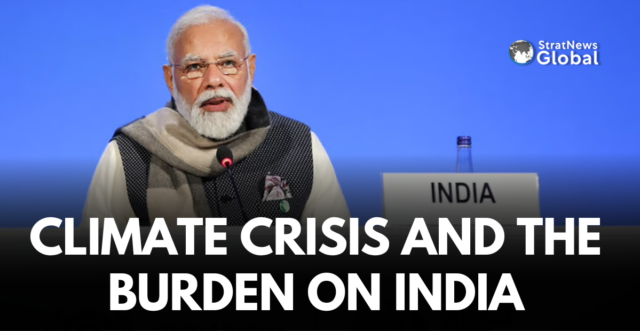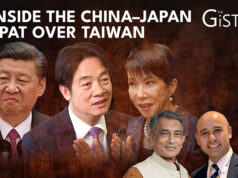Forest wildfires razing the homes of millionaires and billionaires, flash floods sweeping through Europe, and recurring typhoons devastating Southeast Asia—these disasters underscore the worsening impact of climate change. Yet, despite the urgency, Donald Trump has once again withdrawn the United States from the Paris Climate Agreement, a move that, while expected, adds to the climate policy turmoil. This comes in a year where global temperatures have already exceeded 1.5°C above pre-industrial levels.
It might not be all bad, says Srinivas Krishnaswamy, CEO of Vasudha Foundation, a not-for-profit institution working in the areas of climate change, at an event in New Delhi. “The US’ contribution to fighting climate change wasn’t much anyway. Trump pulling out could really impact other nations, but it could also be an opportunity for other countries to actually come forward and lead the charge,” he said.
But the concern isn’t just about the Trump administration. The global political landscape is shifting, with right-wing parties gaining ground and altering international climate priorities. Germany’s climate policy, for instance, is expected to weaken following a change in its governing coalition, with the Green Party losing its key role in shaping policy. Could this broader political shift explain why COP29 fell short of expectations?
Differential Responsibilities
Dr Manish Kumar Shrivastava, Associate Director, Earth Science and Climate Change, TERI disagrees. He believes that global cooperation is the hurdle we are facing while tackling climate change. “The U.S. previously did not want to be seen recognizing the fact that there are differential responsibilities. When the UN framework was being negotiated, the question of differential responsibilities and liberal values was being fought between the developed countries. Germany was saying they should not be unfairly burdened because we have been the early movers.”
Shrivastava reinforces this point. He said, “Germany may continue to have a stance on climate change, focusing on mitigation and maintaining its coal phase-out commitments. But it’s unlikely to scale up international cooperation, particularly on financing.”
Whether it is in an organized global governance group, or institutionalized platforms such as UNFCCC, or even the G20, the stance of developing nations has been on development while that of developed nations has been on geopolitics. “A clear pattern has emerged in the last four years of global politics, that the developed countries were trying to move away from the sustainable development agenda, whereas the developing countries, either when they were hosting G20 or COPs, they were trying to push the development and adaptation agenda,” Shrivastava says.
Climate Adaptation
India is one such nation. Its commitment to climate adaptation was highlighted in the Economic Survey of 2025. Amitabh Sinha, Deputy Editor of The Indian Express, said, “Mitigation will provide uncertain dividends. Even if several resources and efforts are put into it now, its benefits will probably come only in a couple of decades, maybe even later. However, adaptation gives **immediate benefits—**it builds resilience and prevents loss of life.”
While adaptation and mitigation work in tandem, India’s climate action remains largely domestically financed. The disparity in climate funding commitments was evident at COP29, where developed nations pledged $300 billion annually—far short of the expected $1 trillion in assistance. This lack of adequate financing leaves developing countries carrying the weight of a crisis they historically did not create.
The burden isn’t just about reducing emissions. India’s rising adaptation costs reflect this reality. Its climate-related spending has increased from 3.7% to 5.6% of GDP, underlining the growing need for climate resilience. Yet, even as India invests heavily in climate solutions, structural constraints—such as limited storage technology and restricted access to essential minerals for renewable energy—continue to slow the transition.
Coping With The Burden
Sinha highlights this concern: “The argument being made increasingly now is that this entire system was structured to shift the burden onto developing countries like India. By expecting them to meet ambitious climate targets without adequate financial and technological support, the existing global order prevents them from emerging as challengers.”
Yet, some countries have managed to manoeuvre beyond these constraints. While China remains the world’s largest carbon emitter, it has rapidly expanded its installed renewable energy capacity, setting a global benchmark in scale and speed. India, through its International Solar Alliance, is also working to make solar energy more accessible. Additionally, it is prioritizing industrial decarbonization and sectoral emission targets. Even individual states are working towards net-zero goals.
The big question remains: Is it enough for countries like India and China to lead the way? Probably not. But with India aiming to host COP in 2028, it signals a commitment to shaping global climate discourse—a glimmer of hope in an otherwise uncertain future.





